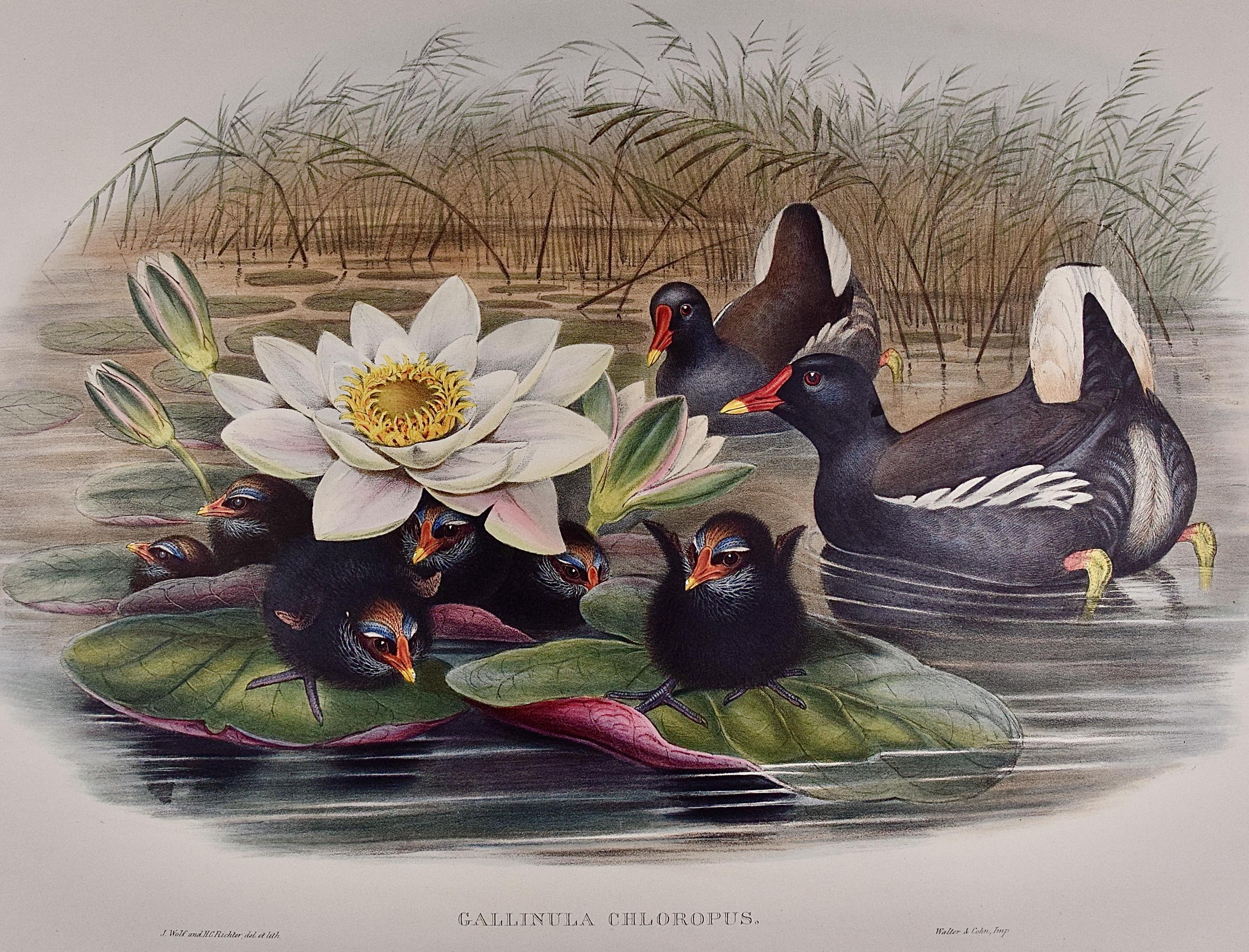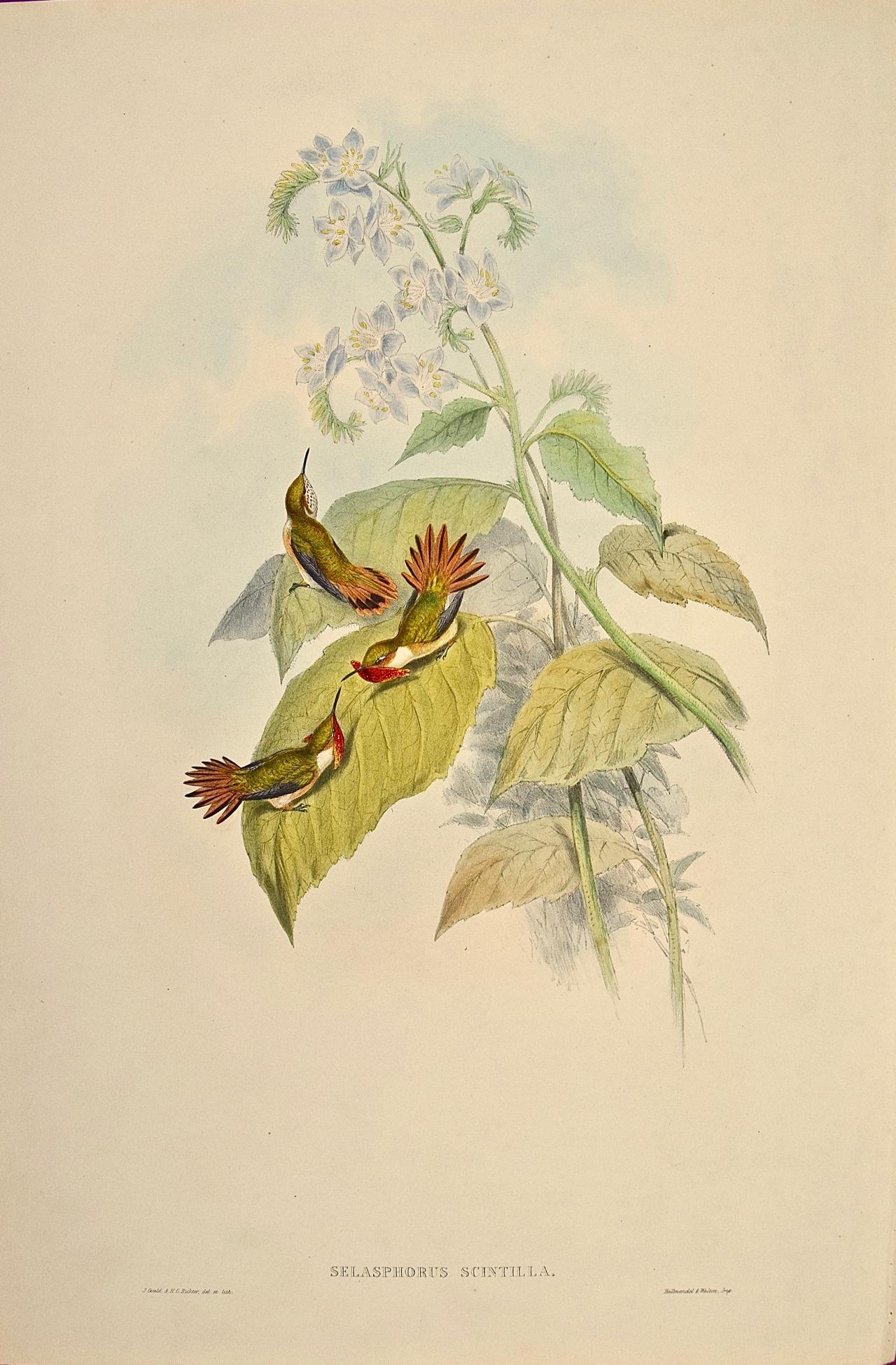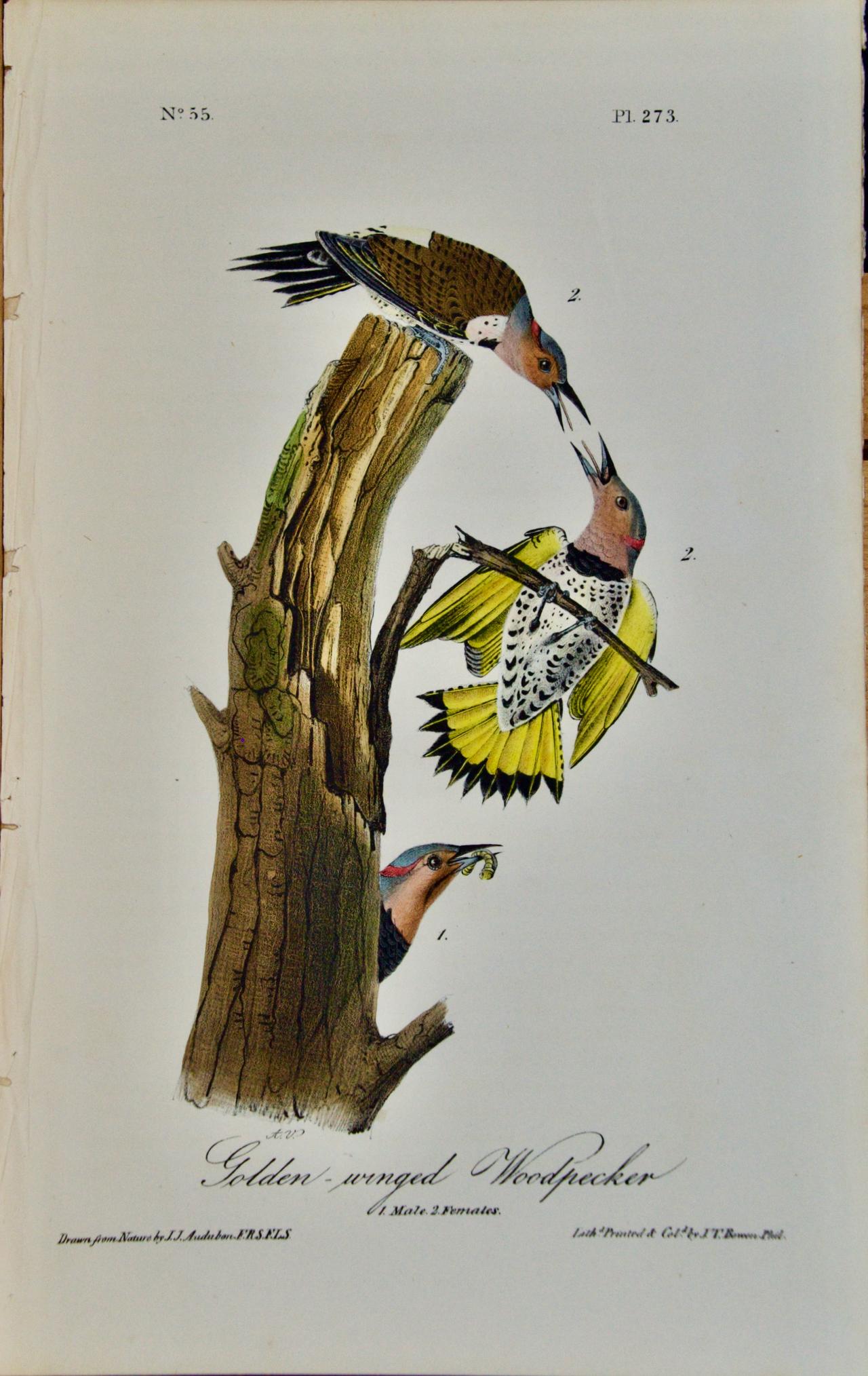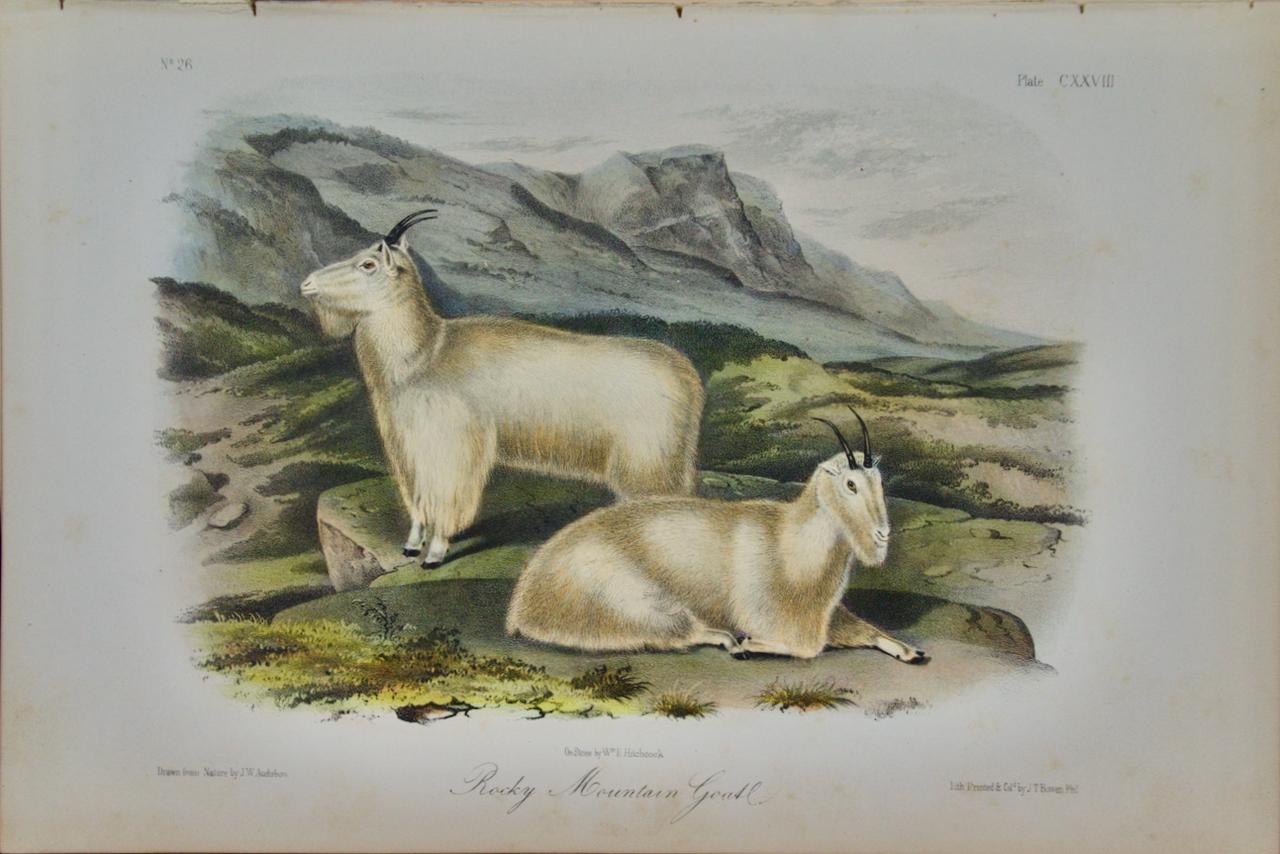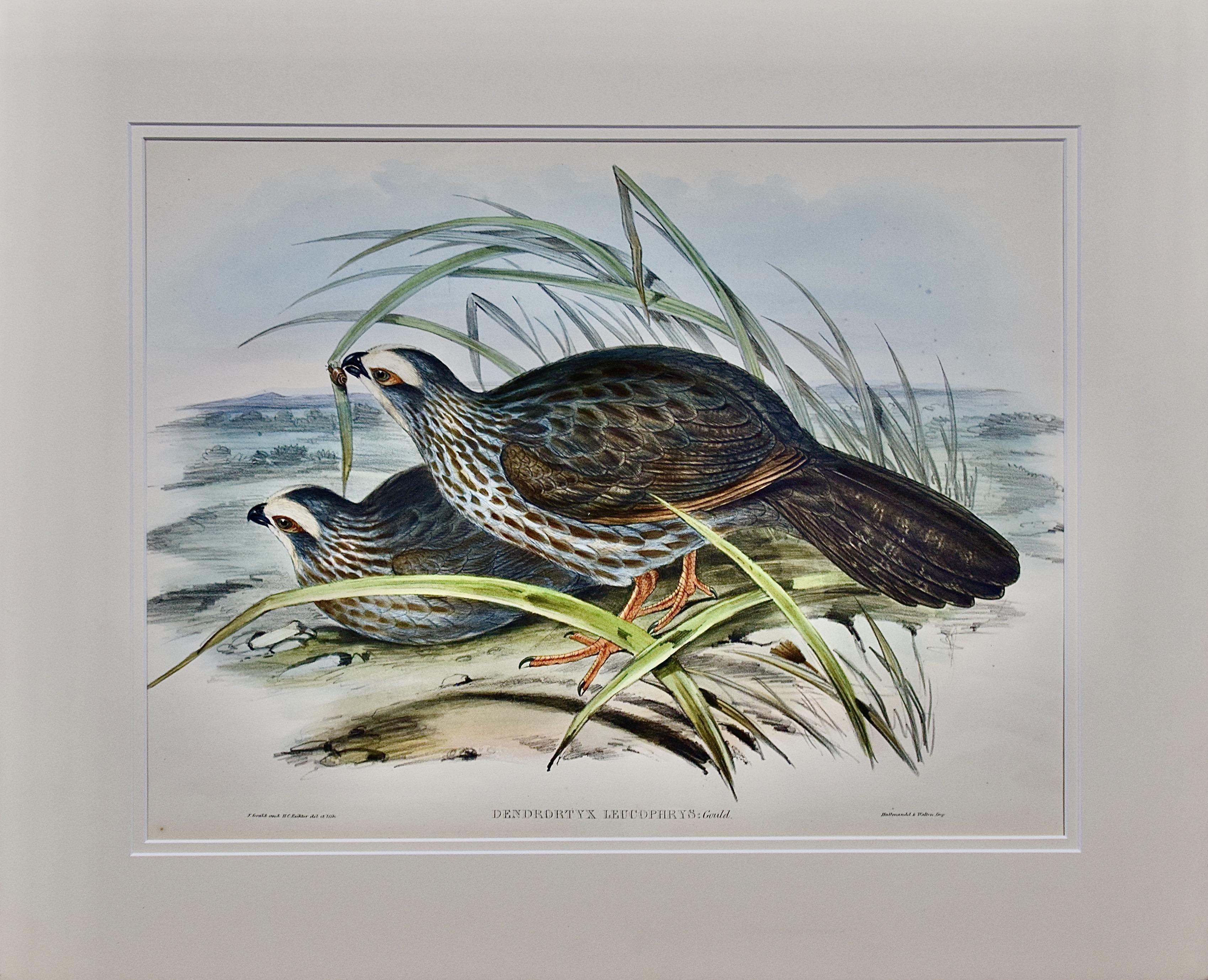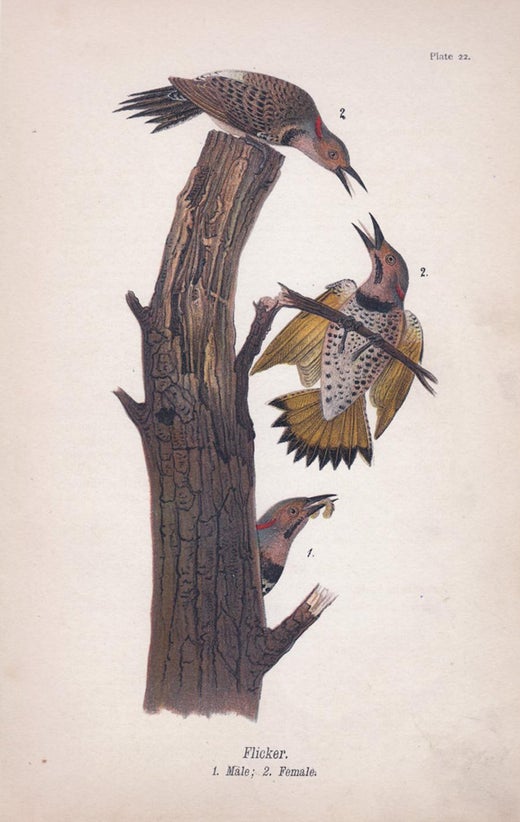After John James Audubon"American Oyster Catcher": An Original Audubon Hand-colored Lithograph 1840
1840
About the Item
- Creator:
- Creation Year:1840
- Dimensions:Height: 6.75 in (17.15 cm)Width: 10.25 in (26.04 cm)
- Medium:
- Movement & Style:
- Period:
- Framing:Framing Options Available
- Condition:
- Gallery Location:Alamo, CA
- Reference Number:
After John James Audubon
John James Audubon was an American ornithologist, naturalist and painter. His combined interests in art and ornithology turned into a plan to make a complete pictorial record of all the bird species of North America. Audubon was notable for his extensive studies documenting all types of American birds and for his detailed illustrations that depicted the birds in their natural habitats. His major work, a color-plate book entitled The Birds of America (1827–1839), is considered one of the finest ornithological works ever completed. Audubon is also known for having identified 25 new species. He is the namesake of the National Audubon Society and his name adorns a large number of towns, neighborhoods, and streets in every part of the United States. Dozens of scientific names first published by Audubon are currently in use by the scientific community. Audubon made some excursions out West, where he hoped to record Western species he had missed, but his health began to fail. In 1848, he manifested signs of senility or possibly dementia from what is now called Alzheimer's disease, his noble mind in ruins. Audubon died at his family home in northern Manhattan on January 27, 1851. He is buried in the graveyard at the Church of the Intercession in the Trinity Church Cemetery and Mausoleum at 155th Street and Broadway in Manhattan, near his home. An imposing monument in his honor was erected at the cemetery, which is now recognized as part of the Heritage Rose District of NYC.
- ShippingRetrieving quote...Ships From: Alamo, CA
- Return PolicyA return for this item may be initiated within 7 days of delivery.
- A Family of Moorhens & Lilly Pad: A 19th C. Hand-colored Lithograph by GouldBy John Gould and Henry Constantine RichterLocated in Alamo, CAThis is an original 19th century hand-colored folio-sized lithograph entitled "Gallinula Chloropus" (Moorhen) by John Gould, published in his "Birds of Great Britain", published in London between 1862 and 1873. The print, which was drawn by Gould and Henry Richter and lithographed by Walter & Cohn, depicts a family of Moorhens, including two adults and six babies in a beautiful landscape. The adults are in the water and the babies are lying on the leaves a flowering lilly pad. This striking Gould hand-colored moorhen family lithograph is augmented with gum-arabic paint. The sheet measures 14.88" high and 21.75" wide. It is in excellent condition, other than a spot in the upper portion of the right margin and two small spots at the edge of the lower margin on the left. The original descriptive text pages from Gould's 19th century publication are included. There are several other unframed Gould hummingbird lithographs available on our 1stdibs and InCollect storefronts. Two or more of these striking lithographs would make an attractive display grouping. A discount is available for purchase of a set depending on the number. These additional Gould hummingbirds may be viewed by typing Timeless Intaglio...Category
Mid-19th Century Naturalistic Animal Prints
MaterialsLithograph
- Flame-bearer Hummingbirds: A 19th C. Gould Hand-colored "Selasphorus Scintilla"By John Gould and Henry Constantine RichterLocated in Alamo, CAThis is a hand-colored folio sized lithograph entitled "Selasphorus Scintilla" (Little Flame-bearer Hummingbirds) by John Gould, Plate 162 in his "A Monograph of the Trochilidae, or Family of Humming-birds", published in London in 1850. The print, which was drawn by Gould and Henry Richter and lithographed by Hullmandel and Walton, depicts three brown, green, ochre-colored hummingbirds with flame red protrusions under their beaks; perched on broad moss green-colored leaves of a plant with pale blue-colored flowers. This beautiful Gould hand-colored hummingbird lithograph is augmented with iridescent gum-arabic paint. It is in excellent condition. The original text page is included, which has extensive foxing related to the lower quality paper used for the text pages in the publication. There are several other unframed Gould hummingbird...Category
Mid-19th Century Naturalistic Animal Prints
MaterialsLithograph
- Golden-winged Woodpecker: First Octavo Edition Audubon Hand-colored LithographBy John James AudubonLocated in Alamo, CAThis is an original John James Audubon hand-colored royal first octavo edition lithograph entitled "Golden-winged Woodpecker, 1. Male, 2. Female2", No. 55...Category
Mid-19th Century Naturalistic Animal Prints
MaterialsLithograph
- "Rocky Mountain Goat": An Original Audubon 19th Century Hand-colored LithographBy John James AudubonLocated in Alamo, CAThis is an original John James Audubon hand-colored royal octavo lithograph entitled "Rocky Mountain Goat", No. 26, Plate CXXVIII, 128 from Audubon...Category
Mid-19th Century Naturalistic Animal Prints
MaterialsLithograph
- White Eye-browed Partridges: Hand-colored Folio-sized Bird Lithograph by GouldBy John GouldLocated in Alamo, CAThis is a 19th century hand-colored folio-sized lithograph entitled "Dendrortyx Leucophrys" (White Eye-browed Partridges) by John Gould, published in his monograph 'A Monograph of the Odontophorinae, or Partridges of America' in London between 1844-1850. Reportedly only 250 copies were printed. The print depicts two partridges, one standing and the other lying apparently on sand, surrounded by high grass. A landscape of plants and possibly water is seen in the background. This beautiful hand-colored lithograph is presented in a double cream-colored mat. There is one tiny spot in the left lower corner, faint spots in the right upper print and mild toning about the periphery which is covered by the mat. It is otherwise in excellent condition. It is accompanied by the original text page. John Gould (1841-1881) was an English contemporary of the American John James Audubon. Gould published his first illustrated book on birds in 1831 entitled "A Century of Birds from the Himalaya Mountains", followed by "Ramphastidae" and "Birds of Europe". He then extended the scope of his travels and research to include Australia, New Zealand and New Guinea, drawing birds in their natural habitat. Artists, such as his wife Elizabeth Gould, Henry Richter and Edward Lear, transferred his drawings to hand printed and hand colored stone lithographs, which are known for their beauty, detail and accuracy. As well as an exceptional and prolific artist, Gould was an outstanding scientific naturalist. In approximately 50 years he created approximately 3,000 lithographs of birds...Category
1840s Naturalistic Animal Prints
MaterialsLithograph
- "Washington Sea Eagle": An Original Audubon Hand-colored LithographBy After John James AudubonLocated in Alamo, CAThis is an original John James Audubon hand-colored royal octavo lithograph entitled "Washington Sea Eagle", No. 3, Plate 13, from Audubon's "Birds of America". It was lithographed, printed and colored by J. T. Bowen and published in Philadelphia between 1856-1871. It depicts an adult male sea eagle perched on a rock. This is an excerpt from Audubon's own description of this magnificent eagle, which includes how he came up with the name "Washington Sea Eagle": "The name which I have chosen for this new species of Eagle, “The Bird of Washington,” may, by some, be considered as preposterous and unfit; but as it is indisputably the noblest bird of its genus that has yet been discovered in the United States, I trust I shall be allowed to honour it with the name of one yet nobler, who was the saviour of his country, and whose name will ever be dear, to it. To those who may be curious to know my reasons, I can only say, that, as the new world gave me birth and liberty, the great man who ensured its independence is next to my heart. He had a nobility of mind, and a generosity of soul, such as are seldom possessed. He was brave, so is the Eagle; like it, too, he was the terror of his foes; and his fame, extending from pole to pole, resembles the majestic soarings of the mightiest of the feathered tribe...Category
Mid-19th Century Naturalistic Animal Prints
MaterialsLithograph
- Pug, Greyhound, TerrierLocated in Columbia, MOPug, Greyhound, Terrier 1883-84 Chromolithograph 8.5 x 11 inchesCategory
1880s Naturalistic Animal Prints
MaterialsLithograph
- Stow Wengenroth, Friendly Neighbors (Birds)By Stow WengenrothLocated in New York, NYEdition of 80. Signed and numbered in pencil. Really, no one could draw on a lithographic stone like Stow Wengenroth. He drew many animals and birds...Category
Mid-20th Century Naturalistic Landscape Prints
MaterialsLithograph
- New BeginningsBy Joseph RaffaelLocated in San Francisco, CAArtist: Joseph Raffael (American, 1933-2021) Title: New Beginnings Date: 1982 Medium: Color lithograph Sheet size: 33.5 x 31.75 inches Framed Size 38 x ...Category
1980s Naturalistic Landscape Prints
MaterialsLithograph
- Terriers No. 1Located in Columbia, MOTerriers No. 1 1883-84 Chromolithograph 8.5 x 11 inchesCategory
1880s Naturalistic Animal Prints
MaterialsLithograph
- Dalmation & Bull TerrierLocated in Columbia, MODalmation & Bull Terrier 1883-84 Chromolithograph 8.5 x 11 inchesCategory
1880s Naturalistic Animal Prints
MaterialsLithograph
- DachsundsLocated in Columbia, MODachsunds 1883-84 Chromolithograph 8.5 x 11 inchesCategory
1880s Naturalistic Animal Prints
MaterialsLithograph
